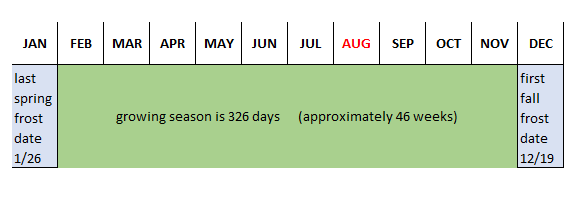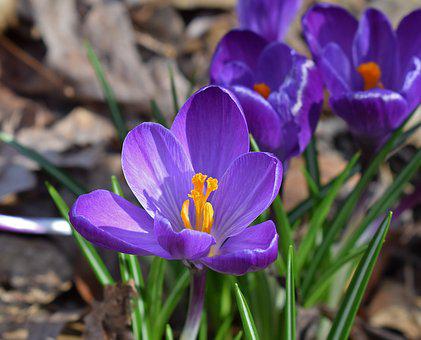How Late Can You Plant Zinnia Seeds?
See how late you can plant zinnia seeds outdoors by using your average first fall frost date. Have time for the plants to germinate, bloom and enjoy them before first fall frost hits.
If time got away from you for spring planting seeds or you acquired zinnia seeds into the season, you don’t necessarily have to forego enjoying flowers until next year. It may not be too late to plant zinnia seeds and enjoy bursts of colorful flowers that last until the first frost.
To determine how late you can sow zinnia seeds outdoors, you will need to know the days in the growing season for your zone. The growing season are the days between your average last spring frost date and your average first fall frost date.
For more information about frost dates and zones see what is a frost date.
Not sure what your average frost dates are? The Farmers Almanac provides a zip code search tool for finding frost dates by zip code. Keep in mind that these dates are determined for your location based on the nearest weather station. Data is calculated using 1981-2010 Climate normals. There is a 30% probability that there could be frost outside of these specified dates. However, this is a good starting point for any gardener.
Guidelines
- Average last spring and first fall frost dates are averages. There is a 30% probability that there could be frost outside of these specified dates.
- Zinnia seeds need to be sown outdoors a minimum of two weeks after the average last spring frost date for your zone.
- Zinnia seeds sown directly outdoors will typically bloom in six to eight weeks within the growing season.
- Zinnia plants will die when exposed to hard frost. The date this is estimated to occur for your zone is the average first fall frost date.
You can estimate the latest date to plant zinnia seeds by counting backward from your average first fall frost date.
Calculate The Latest Date To Plant Zinnia Seeds
Zinnias bloom an average of six to eight weeks from sow date. For this example, we will add an additional eight weeks to enjoy blooms before frost. That makes a total of 16 weeks. Count backwards 16 weeks from your first fall frost date to see the latest date to plant your seeds.
Here is an example with a short growing season:
The last spring frost date is 4/25 and the first fall frost date is 10/18.
There are approximately 25 weeks of growing time.

Counting sixteen weeks backwards from 10/18 places the latest seed planting date in late June. Plants will bloom in August and you can enjoy them until frost in October.
Here is an example with a long growing season:
The last spring frost date is 1/26 and the first fall frost date is 12/19.
There are approximately 46 weeks of growing time.

Counting sixteen weeks backwards from 12/19 places the latest seed planting date in late August. Plants will bloom in October and you can enjoy them until first frost in December.
The above examples are based on eight weeks to enjoy your blooms before potential frost. You can adjust this to four weeks if desired, and count backwards 12 weeks instead. This leaves only four weeks before frost is anticipated to hit, but does extend your time to plant seeds later into the season.
Succession Planting Zinnias
Zinnias fizzle out and can lose their vibrancy as they age, especially in long growing seasons. You may consider planting zinnia seeds at two-week intervals for continuous blooms. You can use the method above to create a seed planting schedule for your zone and enjoy consistent blooms until frost.
Another option is to make one secondary sowing as it fits your growing season. A second planting of zinnia seeds can be used to enliven spaces where perennial flowers are fading. Second plantings in containers provide fresh vibrant fall color for patio or balcony.
With so many types and colors of zinnias, you can re-create the garden in the same season!
Save Zinnia Seeds
Zinnias are easy to grow in vibrant colors. You can enjoy them year after year by harvesting zinnia seeds yourself. They make great cut flowers too, that work well with other annuals for cutting gardens.
Consider Variables
There are many variables that can affect the outcome when starting seeds outdoors. Soil moisture, temperature, humidity, light, rodents – are just a few factors that could affect a zinnia seed’s ability to germinate and grow.
Starting seeds in the middle of Summer is not the same as starting seeds in the Spring. For example, Spring rains and mild temperatures often keep the soil moist enough to encourage germination naturally. In the heat of dry Summer, you will have to manually water the soil to keep it moist. Consider the possible factors that exist and adjust the care of the seeds and seedlings to assure success. See How Much Water Do Annual Flowers Need for more information about water requirements for annual plants.
Explore More




Comments
How Late Can You Plant Zinnia Seeds? — No Comments
HTML tags allowed in your comment: <a href="" title=""> <abbr title=""> <acronym title=""> <b> <blockquote cite=""> <cite> <code> <del datetime=""> <em> <i> <q cite=""> <s> <strike> <strong>